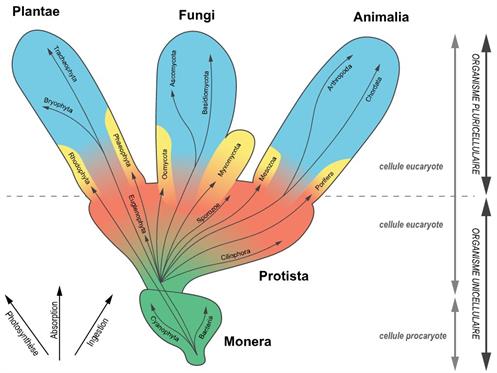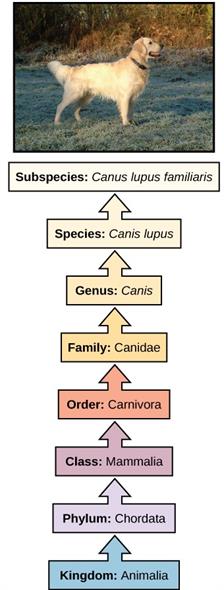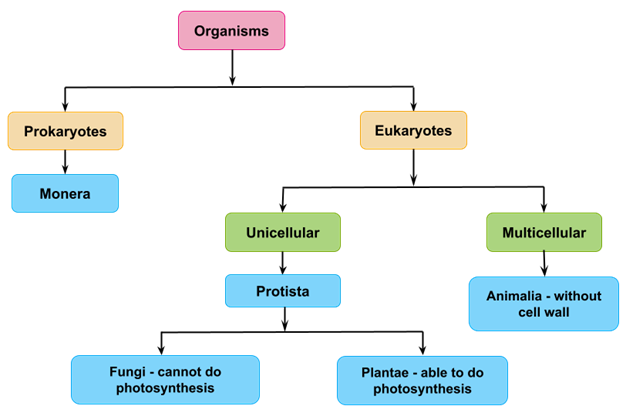
PUMPA - SMART LEARNING
எங்கள் ஆசிரியர்களுடன் 1-ஆன்-1 ஆலோசனை நேரத்தைப் பெறுங்கள். டாப்பர் ஆவதற்கு நாங்கள் பயிற்சி அளிப்போம்
Book Free DemoHierarchy of classification
The living organisms were classified into broad categories known as kingdoms by Carolus Linnaeus in \(1758\) firstly. He classified the organisms into two kingdoms known as Plantae and Animalia. Thus, his classification was known as two-kingdom classification. Later on, biologists such as Ernst Haeckel (\(1894\)), Robert Whittaker (\(1969\)) and Carl Woese (\(1977\)) played major roles in the classification.
Based on the cell structure, mode and source of nutrition and body organisation, Robert Whittaker classified living organisms into five kingdoms such as,
- Monera
- Protista
- Fungi
- Plantae
- Animalia

The tree of five kingdom classification
Carl Woese divided the kingdom monera into archaea or archaebacteria and eubacteria or bacteria.
In further classification, the sub-groups are named at various levels as following.

Hierarchy of classification of Canis lupus
The separation of the organisms into smaller and smaller groups of the basis of a hierarchy of characteristics finally ends at the basic unit of classification known as species.
All the organisms that are similar enough to breed belong to a species.

Reference:
https://upload.wikimedia.org/wikipedia/commons/e/e5/SystemeOrganisationVivantCinqRegnesWhittaker1969.svg
https://upload.wikimedia.org/wikipedia/commons/0/06/Figure_20_01_04ab.jpg